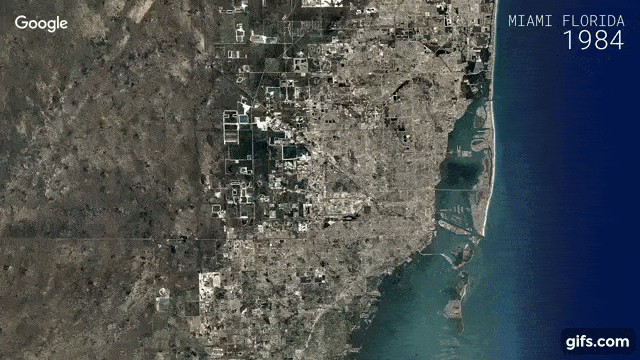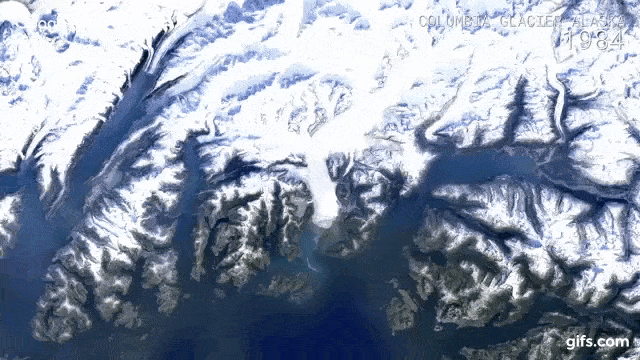The latest update to Google’s Timelapse shows you just how fast parts of our planet are changing — and how much of that change is brought on by humans.
We have outgrown our feral origins into a truly world-shaping force. The sheer magnitude of our mark on the planet can be a daunting thing to convey in writing, simply because you’re trying to cram glaciers melting, string theory, and sprawling cities in 140 characters or less.
Thankfully, we have technology much more powerful than ink to play around with. The latest update to Google’s Timelapse (first introduced in 2013) helps put everything into perspective. Drawing on satellite data recorded as far back as 1984, most of it collected by NASA’s Landsat program, the tech giant pieced together a year-by-year view of the entire planet. It took a huge amount of work — some 5 million individual images had to be collected and made to fit — but users can now select any place on Earth and watch how it changed over the last three decades. And boy oh boy did it change.

The drying of the Aral sea, which is regarded as one of the worst environmental disasters in modern history. Originally one of the largest inland seas/lakes in the world, with an area of 68,000 sq km (26,300 sq miles,) by 2014 it had largely dried up. Its eastern basin is now known as the Aralkum Desert.
The update added petabytes of data to bring Timelapse up to date, and help make the images crisper by mixing in data from ESA’s Sentinel-1, Sentinel-2, and the Landsat 8 satellites and a host of other programs as well.
It comes with a few pre-selected places that Google felt experienced the most eye-catching transformations. These showcase the incredibly organic-looking development of cities such as Miami, Florida, Las Vegas, Nevada, or the sprouting of Dubai’s palm islands.
But Timelapse also showcases the more worrying changes out there: the drying of the Aral sea, the receding Columbia Glacier in Alaska, massive environmental displacement in Southeast Asia as juggernaut cities grow even larger, rampant deforestation in the Amazon, and more.
It’s an awesome testament to how far we’ve come as a species — but also a terrible sight of how much damage we can unintentionally wreak upon the world around us. Either way, it’s truly a sight to see, and it’s now in higher definition than ever before. So go play around with the Timelapse and see what strange, impressive, or terrifying sights you can stumble upon.
You’d be hard pressed to find an area that hasn’t changed over the last three decades. Makes you wonder how much, and in what way, it will change over the next 30 years.











